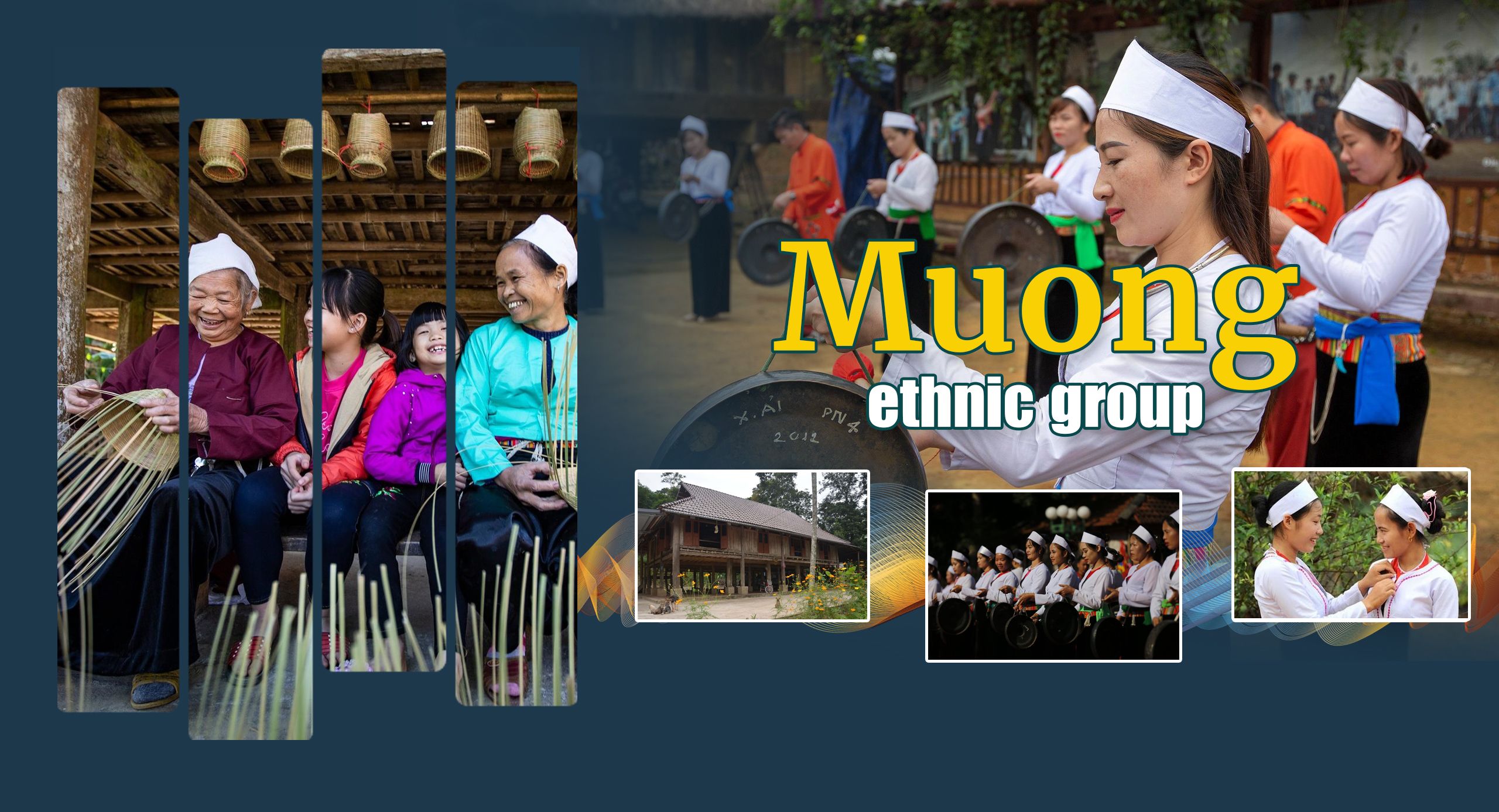
The Muong ethnic community has a population of more than one million, establishing itself as the fourth largest ethnic group after the Vietnamese, Tay and Thai. As an indigenous ethnic group in Vietnam, the Muong people have the same origin as the ancient Vietnamese. Muong ethnic people reside in many northern provinces, mostly in Hoa Binh and Thanh Hoa Provinces.
1. Historical origin
The Muong are an indigenous ethnic group who have lived for a long time in Vietnam and possesses a rich culture with distinguished ethnic identity.
The Muong people also have other names: Mol, Mual, Mul, and Mon
2. Geographic distribution
The Muong ethnic community in Vietnam live in fairly large hilly areas and in valleys at the foot of mountains which have favourable geographical and ecological conditions for cultivation. Their living areas are located between the living areas of Vietnamese group in the east and the Thai group in the west, stretching about 350km in length and around 80-90km in width, running through Hoa Binh Province; Phu Tho Province’s Thanh Son, Tan Son, Yen Lap and Thanh Thuy districts; Thanh Hoa Province’s Ngoc Lac, Thach Thanh, Cam Thuy, Ba Thuoc, Nhu Xuan, and Lang Chanh districts; and several areas in the provinces of Son La, Ninh Binh, and Yen Bai.
3. Population, language
Population: The Muong is the fourth largest ethnic group in Vietnam, after the Vietnamese, Tay and Thai.
According to the Survey of 53 ethnic minorities in 2019, there are 1,452,095 Muong ethnic people in Vietnam
They live mainly in Hoa Binh Province (with a population of 549,026 people), Thanh Hoa Province (341,359 people); Phu Tho Province (218,404 people); Son La Province (84,676 people); Hanoi (62,239 people); Ninh Binh Province (27,6345 people), and Yen Bai Province (17,401 people). In addition, Muong people are present in some southern provinces and cities such as Dak Lak (15,656 people); Binh Duong (9,021 people); Dong Nai (6,257 people); and Lam Dong (6,072 people).
Language: The Muong ethnic language belongs to the Viet - Muong language group (Southern Asian language family).
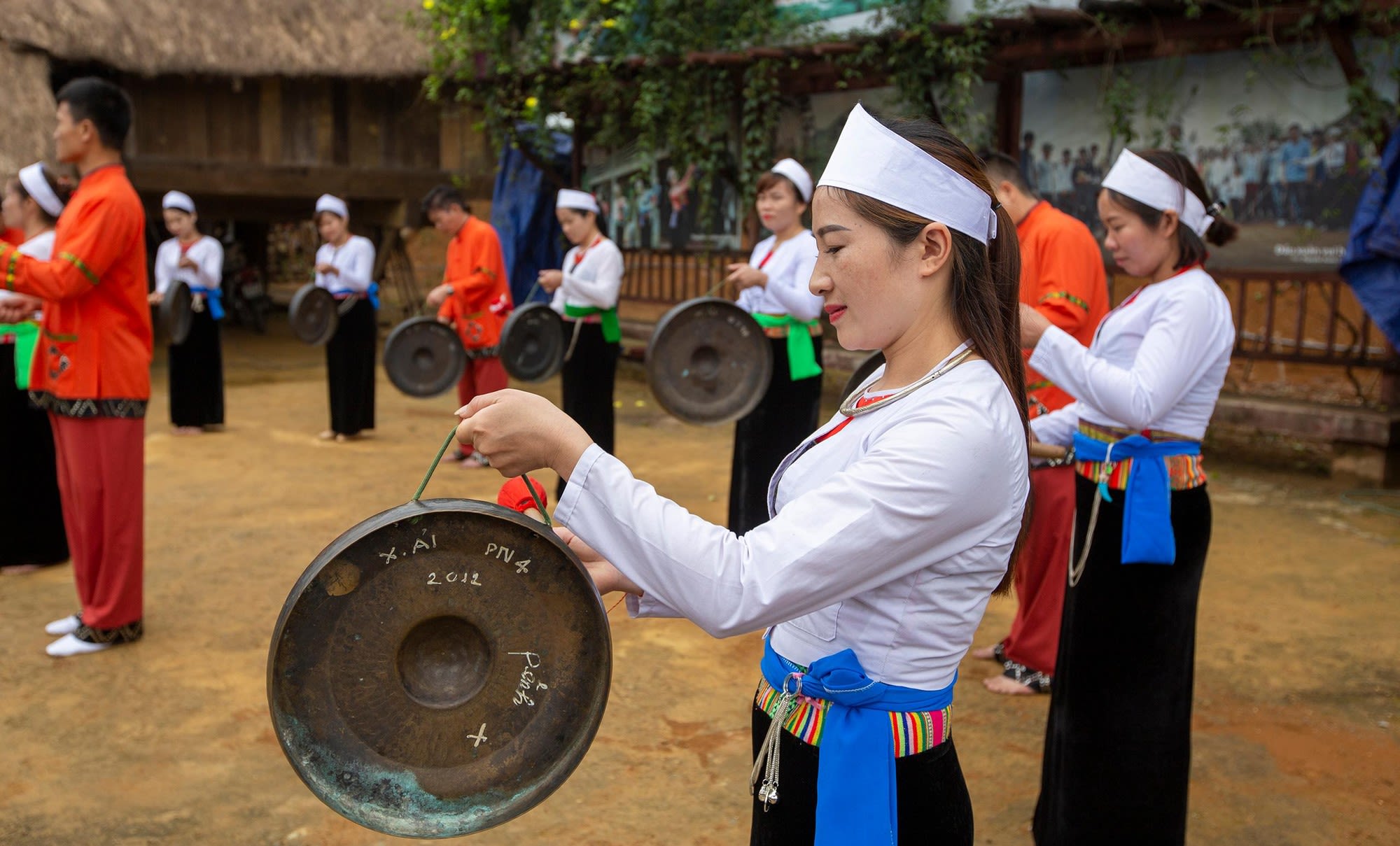
A performance honouring intangible cultural heritage of Muong ethic people in Hoa Binh province (Photo: THANH DAT)
A performance honouring intangible cultural heritage of Muong ethic people in Hoa Binh province (Photo: THANH DAT)
4. Main features
Traditional social institutions: The traditional social organisation of the Muong people has many typical features. Their society is divided into the classes of the ‘lang’ (nobility) and the common people. The social institutions in the traditional society of the Muong people are generally hamlets and ‘muong’ where a management apparatus is formed and operated according to customary law, which is absolutely observed by all members. The residential area of Muong people is known as a ‘quel’ (village). The village is the basic unit of Muong society, consisting of many patriarchal sub-families, in which the power belongs to the eldest child.
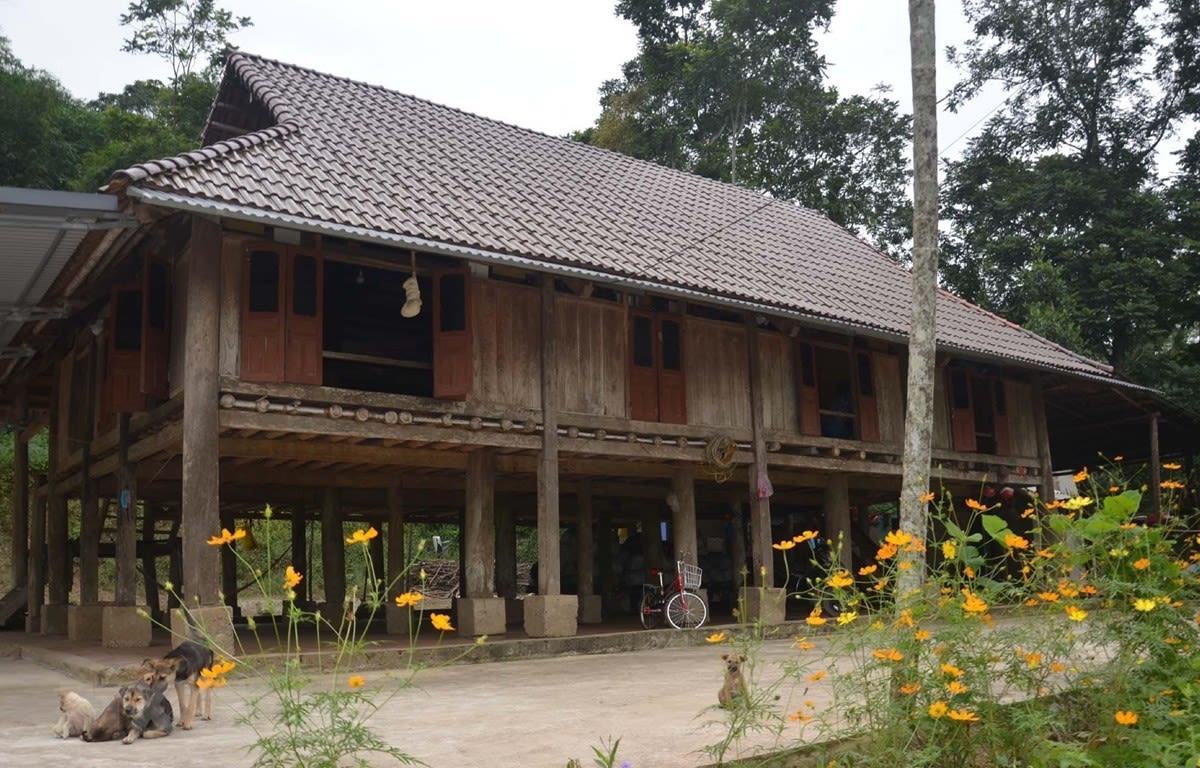
A century-old house on stilt of Muong ethnic people in Ngoc Lac District, Thanh Hoa Province (Photo: VNA)
A century-old house on stilt of Muong ethnic people in Ngoc Lac District, Thanh Hoa Province (Photo: VNA)
Housing: The majority of the Muong people live in houses on stilts which are built with four roofs, and are surrounded by areca trees and jackfruit trees. The upper part of the house is the living area while the under-floor area is the place to keep cattle and poultry, as well as to store rice mills, and other production tools. Nowadays, as the economic status and living conditions of Muong people have been improved, many of them have built tile-roofed houses, flat-roof houses, and high-rise buildings, which are constructed in the Vietnamese architectural style.
Religions and beliefs: Muong people worship ancestors, Tan Vien Saint, and the deity of the earth.
Clothing: Women's costumes are more diverse than men's. Accordingly, a women’s clothing set include a headband is a rectangular piece of white fabric without embroidery, a blouse (most commonly white) with a very short body with V-shaped neck, and an ankle-length skirt consisting of two main parts: the skirt body and the skirt waist. The skirt waist is distinguished for its intricately woven patterns. Jewellery includes bracelets, necklaces, and a set of two or four silver chains mounted with some carved tiger claws, bear claws, and a small box of snail shells.
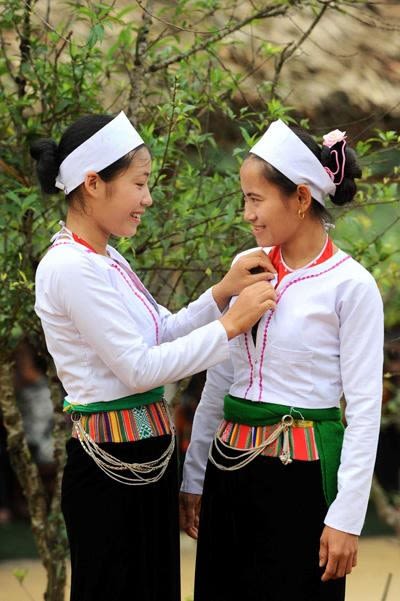
The art of decorating skirt waist in traditional costumes of Muong ethnic women is imbued with Dong Son culture. (Photo: baodantoc.vn)
The art of decorating skirt waist in traditional costumes of Muong ethnic women is imbued with Dong Son culture. (Photo: baodantoc.vn)
Meanwhile, men's traditional costumes of the Muong people are simpler. They include a short crew-neck shirt, wide leg trousers dyed brown or indigo. When wearing pants, the man will cross the two edges of the waistband inward and tie them with a scarf. Muong ethnic men's scarves are in black or dark purple. Today, Muong ethnic men do not wear their traditional set of clothing anymore as they often buy ready-to-wear clothes in the market.
Marriage: The wedding ceremony of the Muong people is now carried out without old-styled customs like it used to. Men and women are free to love, and get marriage.
Diet: In the past, glutinous sticky rice was the main dish in the daily meal of the Muong, but now it has gradually replaced by ordinary rice, glutinous rice is now only used in festival and family parties to welcome guests.
‘Can’ wine of the Muong people is famous for its procession and rich flavour of yeast. It is used to welcome guest and bring joy and fun at parties. Muong ethnic women and men like smoking with a large pipe. In particular, women also have a custom of sharing the same cigarette while smoking.
Education: In the past, only a few Muong ethnic people knew the Vietnamese national language or Han script, while the majority were illiterate. Since peace was restored in the country, the learning movement has flourished. Most Muong ethnic parents have changed their traditional way of thinking of inhibiting their children's eagerness to study, instead they send their children to schools and create favourable conditions for their children to have a brighter future.
According to the 2019 survey on 53 ethnic minority groups, the rate of Muong ethnic people aged 15 years and over who can read and write is at 95.5% while the net attendance rate for children of primary school age is 100.8%, junior secondary school age is 96.3%, and senior secondary school age is 71.5%. The percentage of out-of-school children is 6.7%.
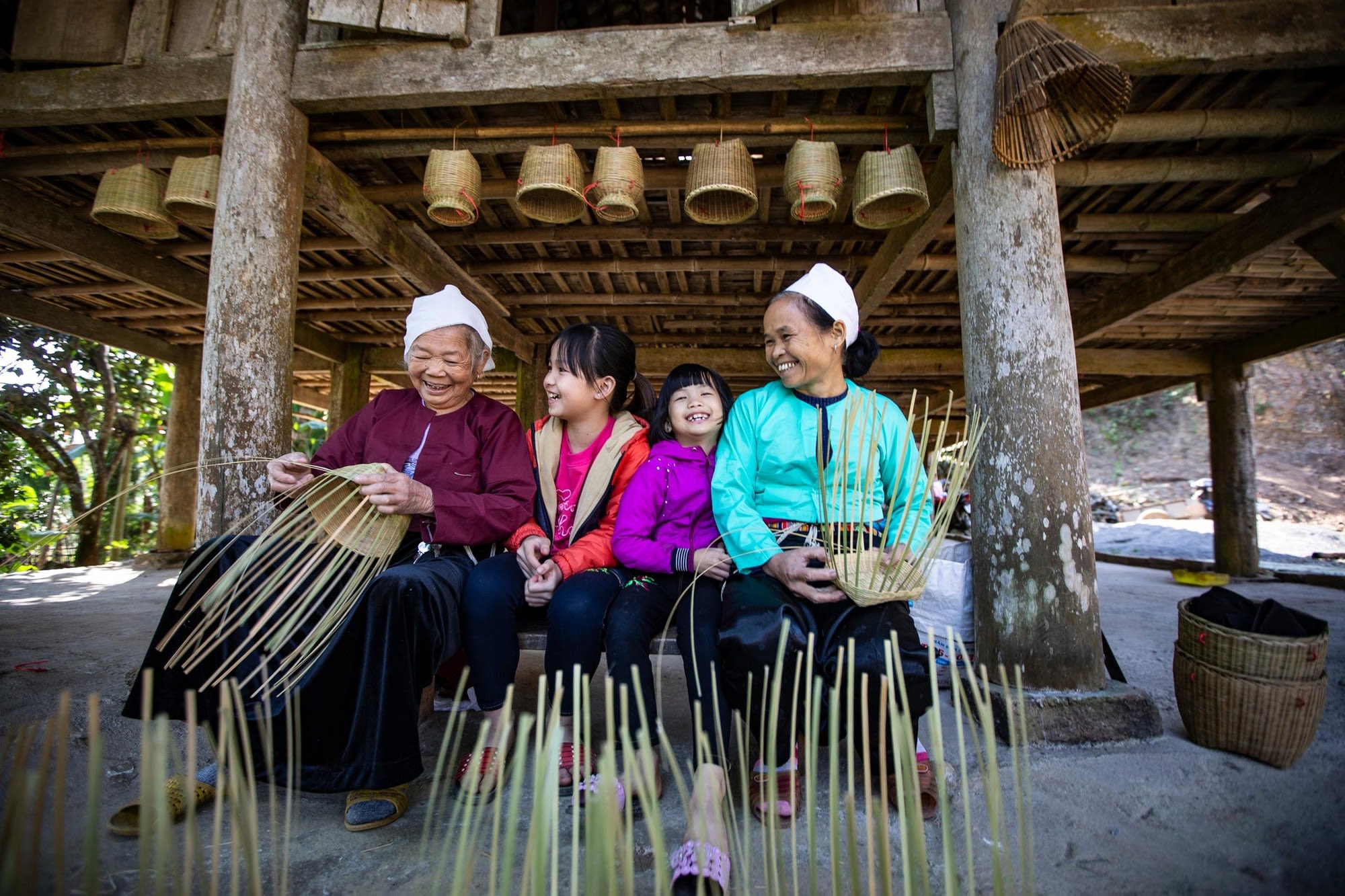
Weaving and knitting are two typical traditional handicrafts of Muong ethic people (Photo: THANH DAT)
Weaving and knitting are two typical traditional handicrafts of Muong ethic people (Photo: THANH DAT)
5. Economic conditions
The main economic activity of the Muong ethnic group is wet-rice agriculture. The Muong people practice wet-rice agriculture with shifting cultivation, animal husbandry, hunting, gathering and handicrafts, following economic self-sufficiency model. As their residence areas are located in the valleys at the foot of the mountains, where there are dense rivers and streams, the Muong people have completed an irrigation system to direct water to irrigate the fields and crops. They also practice handicrafts, typically weaving and knitting.
Since the national Doi Moi (Renewal) process was carried out across the country towards national industrialisation and modernisation, the Muong ethnic people's economic status has made remarkable progresses. According to the survey of 53 ethnic minorities in 2019, the unemployment rate is 1.18%; the percentage of the labour force involved in non-agricultural activities is 36%. The poverty rate in Muong ethnic community is 14.5%; the rate of near-poor households is 14.9%. The percentage of households getting access to clean water is 89.9%, and the percentage of households getting access to electricity is 99.6%.